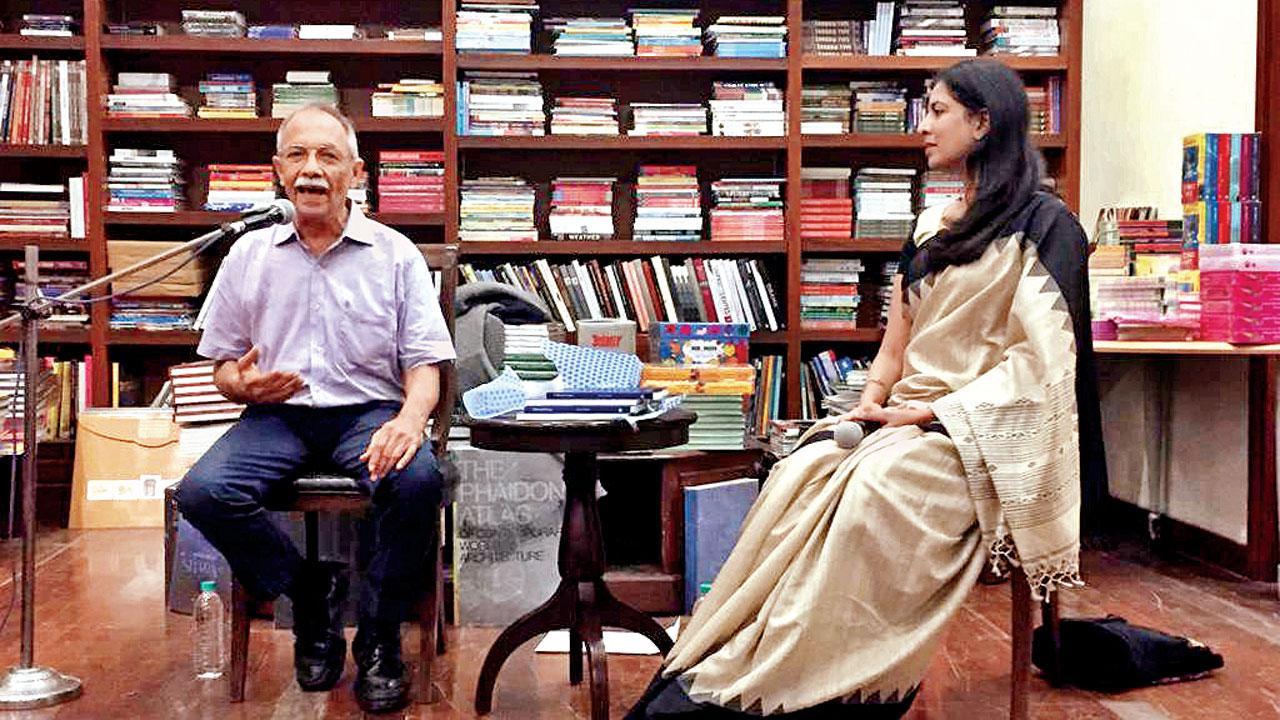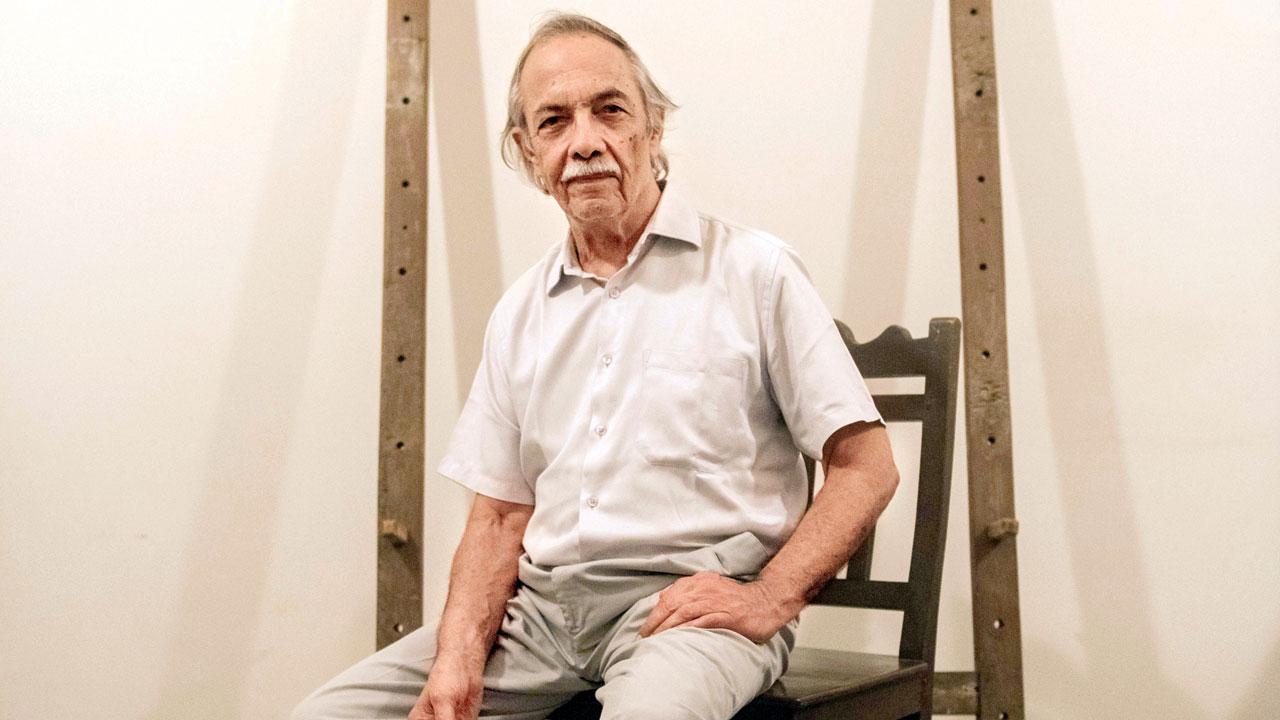A tribute event to celebrate multi-hyphenate Gieve Patel will be a toast to his literary work, nourishing friendships and mentor’s spirit

Patel and Subramaniam at the launch of his Collected Poems at Kitab Khana; she wrote the preface to this collection. Pic/Atul Dodiya
He was all of 18 when he first met Gieve Patel, Ranjit Hoskote says, a few years after he encountered the poet-playwright-artist’s work On Killing a Tree—a poem that finds a place in many school textbooks. It was at their guru Nissim Ezekiel’s office at Theosophy Hall; in the months to come, they kept in touch and wrote to each other, laying the foundations of a cherished, three decade-long friendship.
The other space where Hoskote and Patel would frequently meet and cross paths in the 1990s was the NCPA—specifically the Little Theatre. It comes as no surprise then, that for Hoskote, an upcoming tribute event at the NCPA for Patel is something of a homecoming. He and other voices from Mumbai’s literary community who shared ties with Patel will come together to celebrate the physician-artist’s versatility across poetry and theatre.
ADVERTISEMENT

Ranjit Hoskote. Pic/Priyesha Nair
This evening will also be one of personal remembrance, as Patel’s contemporaries such as Adil Jussawala, and those who came after him, like Arundhathi Subramaniam, reflect on his plays and verses. Subramaniam’s introduction to Patel’s oeuvre, like Hoskote, was On Killing a Tree. Patel was invited to her school to read the much-anthologised poem. “The year was probably 1983 or 84. I remember his broad smile clearly, as well as his crisp, unsentimental reading of his work,” she says.
After 1994, when Subramaniam was head of Chauraha, an inter-arts forum at the NCPA, she frequently interacted with Patel, his theatre director wife Toni, and their daughter as she hosted individual and joint readings by them. “There was a directness of manner, an honesty and openness about Gieve that appealed. I remember his laugh, the clarity of his gaze, his ability to see right through affectation and pretension of every kind, his integrity. I always found his refusal to kowtow to the caprices of cultural fashion refreshing,” the award-winning poet shares. They spent many evenings at Churchgate’s Tea Centre and Nariman Point’s Status restaurant—evenings dotted by conversation, idlis and filter coffee.

Patel in 2017; younger poets recall the sage advice he offered. Pic/Getty Images
Hoskote recalls with great fondness his friend’s ability to give advice. “Very early on in my poetry career, I thought I was weighing too many options at a certain point. And he said, ‘You need to go deep down to where things are broken.’ It is when I grew older that I realised the wisdom in this advice. He had great sensitivity towards questions of the creative imagination. And he never offered unsolicited advice,” the curator-poet-culturaltheorist says.
An aspect that ties Patel, Hoskote and Subramaniam together is their hybrid practices—across mediums and formats. Patel, who studied medicine and trained as a general practitioner, would go on to paint oil and acrylic works, write impactful plays like Mister Behram (directed by his wife), and conjure poetry that would be quoted many times over, by succeeding generations.
Subramaniam speaks of a memory when Patel told her how freeing it was to not have to pick between disciplines. “He was encouraged to believe he had to specialise in one in order to be successful. It was a turning-point when he realised there was no real pressure to choose. I remember him saying, ‘I found I could do them all, and I’ve been happy ever since.’” At the same time, Subramaniam says, Patel wasn’t trying to be a Renaissance man; he was simply an artist deeply and single-mindedly committed to each of his pursuits.
Hoskote, whose essays on Patel’s work will soon be published as a book by Seagull, says that the decades between the 1940s and 1990s saw a diverse ethos for art in Mumbai, where different forms were interconnected. “People hadn’t gone into professional silos and become over-fascinated by monetisation. Gieve and I, though we were at different points in our career, were blessed to be part of an ethos where artistic exchange took place across languages… No one sat you down and said, ‘I’m going to mentor you.’ But there were very generous people who served as examples or made opportunities available to people,” he explains.
WHAT: Celebrating Gieve
WHEN: 19 January, 6:30 PM
WHERE: Experimental Theatre, NCPA
Free admission, on a first-come-first-serve basis
 Subscribe today by clicking the link and stay updated with the latest news!" Click here!
Subscribe today by clicking the link and stay updated with the latest news!" Click here!








